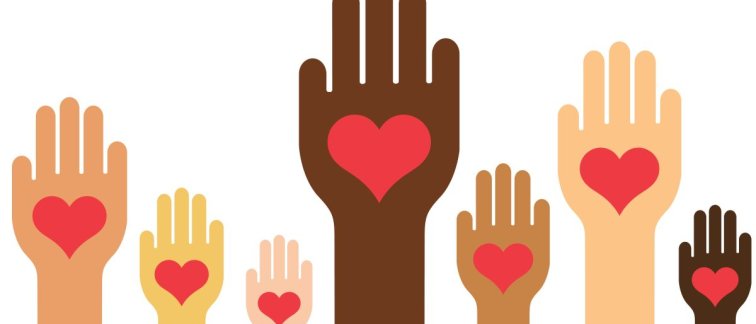Racism is a problem, also in academia. Researchers Manou Anselma and Mai Chin A Paw are investigating racial injustice in their own workplace: Amsterdam Public Health research institute. Creating an environment where everyone feels at home and has equal opportunities regardless of gender, religion, sexual orientation, background, or physical condition, what does it take?
Since the Black Lives Matter movement in the United States inspired other countries, racism has also received more attention in the Netherlands. An important point of attention is institutional racism, which is consciously or unconsciously woven into the structures of our society. This concerns discrimination against groups based on written and especially unwritten rules, traditions, behavior and manners.
You really need to make people aware that racism is everywhere, also within academic institutions.
- Manou Anselma
It is well known that relatively few students and staff of color can be found in Dutch academic institutions. These students and staff also experience racial injustice in various ways, such as discriminatory biases and assumptions. Individuals who themselves have never experienced exclusion, disadvantage or discrimination in their daily lives or in their working lives often cannot imagine that it does happen to others and/or how it feels.
Diversity and inclusiveness in the academic workplace
Supported and co-funded by Amsterdam Public Health research institute, Manou Anselma and Mai Chin A Paw, conduct research on experiences with racism in the institute itself with their project ‘I Act’. Through this project together with Amsterdam Public Health research institute, they want to contribute to the creation of an accessible, diverse, and inclusive work environment. That is an environment in which all employees feel at home and have equal opportunities. With a survey among PhD students and employees of Amsterdam Public Health research institute, the project team wants to gain more insight into the diversity of employees within the research institute and the extent to which employees experience their department as inclusive. Furthermore, the survey will also collect ideas for actions towards a more inclusive culture.
How inclusive is academic research itself?
In addition to the research institute’s workplace, the ‘I Act’ study also examines academic research itself. Mai Chin A Paw: “I am convinced that a diverse and inclusive research institute leads to more inclusive and relevant research with a broader societal impact. Therefore, we interview participants in scientific research about their experiences with research and whether they experienced discrimination during their participation and if so, in what way.” Manou Anselma: “How conscious are we of how we engage with study participants? We often say, ‘They’re hard to reach’, but is that true?” It is a fact that some populations are underrepresented in studies. By engaging with participants about their experiences as participants in research and interviewing people from different backgrounds in the process, a better picture can be obtained of how inclusive the current way of conducting research is. What (potential) improvements can contribute to more inclusive scientific research for all participants?
Working together for culture change
The results of the ‘I Act’ study will form the basis for actions or policies that contribute to a diverse and inclusive work environment. In addition, it is important to improve the quality and societal impact of studies by better connecting with the diverse society in the Netherlands. The solutions and actions will be developed by a yet to be formed diversity committee. The formation of this committee is also part of the ‘I Act’ project.
If you can tick off diversity in your organization, that doesn’t mean you have an inclusive culture. - Mai Chin A Paw
Ultimately, everyone in the organization is needed to really bring about a cultural change. Manou Anselma: “Management plays an important role here because they ultimately make the choices about what actions will be implemented to promote diversity and inclusiveness and determine what resources will be made available to bring about structural change. In addition, of course, the organization needs the willingness of all employees to delve into the subject and create awareness. An inclusive workplace requires sustained attention and effort and concerns everyone.”
Prof dr. Mai Chin A Paw and Dr. Manou Anselma are researchers at the Child & Adolescent Public health Research and Innovation section, Department of Public and Occupational Health, Amsterdam UMC. Both researchers also work at Amsterdam Public Health research institute (a collaboration between Amsterdam UMC, VU and UvA).

